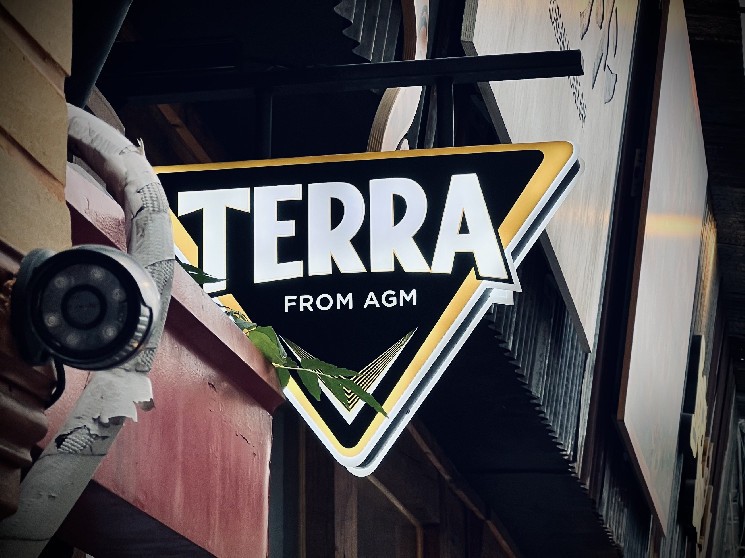‘Don’t Say Terra’ and Other Reflections From Korea’s Crypto Extravaganza

“Don’t say Terra.” Sometimes explicit, sometimes not – the message was clear.
Earlier this month, the who’s who of South Korea’s crypto scene descended upon hotel ballrooms in Seoul’s ritzy Gangnam district. They were there to attend a string of conferences meant to showcase Asia’s budding crypto ecosystem.
Terra, which was founded in South Korea, was one of the most talked about projects in the crypto-verse until it crashed last spring. It was, in many ways, the match that burnt down the entire crypto market – setting off a ripple effect that brought everything, including bitcoin and ether, down to the lowest prices they had seen in over a year.
The largest event in Seoul this month, Korea Blockchain Week (KBW), counted many of Terra’s original builders, investors and partners among its 7,000 attendees. KBW could have been an ideal forum to discuss the ills and excesses that culminated in the project’s unprecedented rise and fall.
Instead, any reflection on Terra – whose controversial tactics continue to run rampant throughout decentralized finance (DeFi) – was conspicuously missing from the KBW agenda. In place of Terra-centered soul-searching were humdrum discussions around GameFi, NFTs (non-fungible tokens) and the future of DeFi. The one-time Korean DeFi darling – ever the elephant in the room – was taboo.
Altogether, the events in Seoul left the impression of an image-conscious industry reluctant to learn from its mistakes or wade into controversy.
What was Terra?
The Terra fiasco, wherein a $40 billion dollar ecosystem collapsed to nearly nothing, continues to cast a shadow over the South Korean crypto scene which birthed and incubated it.
At the core of Terra was UST – a decentralized stablecoin that sought to maintain its $1 peg through clever programming rather than through direct 1:1 backing. The vision was ambitious. And it worked well until it didn’t.
The company that launched Terra, Terraform Labs, sold its vision of a decentralized dollar to legions of retail investors – many of whom lost big when UST (and its sister token, Luna) fell precipitously to zero in May.
For months before the crash, onlookers warned that UST’s stabilizing mechanism, which was supposed to expand and contract the supply of luna to keep UST at $1, was destined to fail just like virtually all similar experiments preceding it.
Suffice to say, the project was risky. And yet, Terra founder Do Kwon and many of his investors were adamant that UST was a safe investment.
Terra played a major role in growing South Korea’s nascent crypto scene. Many of the builders and retail investors who I spoke to in Korea cited Terra – sometimes with an embarrassed chuckle – as their first door into the sector. And I received pitch after pitch from projects that were forced to move to X or Y blockchain after originally building on the ill-fated “Terra Classic” blockchain.
The Terra taboo
Several of the most prominent companies and investors behind the events in Seoul – like KBW co-hosts Hashed and Klaytn – were major Terra partners.
Hashed, a Seoul-based investment firm with a cut-throat reputation in Korea’s crypto scene, suffered from the Terra fiasco just like everyone else did. One of Terra’s largest investors, the firm reportedly lost $3.5 billion from the project’s implosion.
But Terra skeptics have long maintained that Hashed bears some blame for propping up the project’s fragile ecosystem.
Terra’s underlying mechanism was criticized right from the start, but Terraform Labs and its brash founder didn’t want you to believe the haters. They bred a cult-like community that ostracized critics for circulating “FUD,” or “fear, uncertainty and doubt.”
Responding to one critic in July 2021, for example, Kwon tweeted, “I don’t debate the poors.” His response was cheered on by some of Terra’s loyal fans, self-dubbed “lunatics.”
Outside of its propaganda machine, Terraform Labs lured buyers into the Terra ecosystem through generous incentive programs subsidized, in part, by investor money. If the money behind those incentives were to dry up, critics feared that demand for Terra’s UST and Luna tokens would drop enough to break the mechanism that keeps UST “pegged” to one dollar. (In reality, the UST mechanism fell apart long before Terraform Labs ran out of reward runway.)
According to a recent Korean media report, Hashed joined in on the promotion frenzy: Top brass from the firm attacked critics who called out Terra’s mechanics, and the fund issued biased forecasting reports depicting the project in a favorable light.
Hashed’s investments in Terraform Labs also, of course, played a key role in helping the Terra ship set sail.
Has Hashed learned any lessons from investing in a project that reportedly wiped billions of dollars from its balance sheets? Don’t ask Hashed.
At KBW, Hashed refused to speak to CoinDesk about Terra – its best-known investment. The venture firm, which is the largest blockchain-focused fund in South Korea, indicated through its PR reps that it preferred to speak about its newer bets – a preference also reflected in the conference’s Terra-free programming.
Learning from the best
Terra had a massive presence in South Korea’s crypto scene before its collapse, but any reference to the failed project was scrubbed from Korea Blockchain Week and the conferences surrounding it.
During Buidl Asia, one of the conferences that preceded KBW, I was at a lunch with a some of the event’s speakers, including Vitalik Buterin, Ethereum’s co-founder. I mentioned that organizers warned me not to say the word “Terra” during a panel I moderated on stablecoins. (We said it anyway.)
Buterin remarked that he, too, had been advised not to mention Korea’s crypto boogeyman. Buterin is a Jesus-like figure in crypto-land, with his tweets and blog posts heralded as scripture in the Ethereum community.
He couldn’t say “Terra” either?
How a risky bet like Terra grew into a DeFi behemoth despite its glaring flaws remains a subject of inquiry among crypto skeptics and adherents alike.
But rather than ask hard questions around how to prevent the next $40 billion blowup, speakers in Seoul – many of whom, like Hashed, were deeply involved in the project – seemed to act as if the largest crypto crash in history had never occurred.
One of the KBW panels best-suited to address the Terra question could have been the one entitled “Next Generation of Finance on Blockchain.” But as an expert on how DeFi could grow sustainably, KBW chose a curious spokesman: Dylan Macalinao, a co-founder of the blockchain company Saber.
Just a few days earlier, Macalinao and his brother, Ian, were exposed by CoinDesk for using around a dozen pseudonyms to artificially inflate the size of Solana’s decentralized-finance ecosystem. The Saber exposé was still the talk of crypto Twitter by the time of Macalinao’s panel, but, as CoinDesk’s Sam Reynolds observed, the panel didn’t make a single reference to the Macalinaos’ exploits – which included promoting projects without disclosing that they were secretly their own.
By completely avoiding the Saber controversy (let alone Terra), the panel – like the rest of the conference – felt more like an advertisement than a source of insight. It also left one with the impression that the crypto community continues to worship the wrong idols.
Terra? Hardly knew her…
Talk of Terra wasn’t on the official agenda in Korea, but it spilled out into hallways, cocktail hours and afterparties.
Everyone seemed to have some link to the project.
I spoke to Terraform Labs employees-turned-critics about how they had been temporarily banned from leaving the country by Korean prosecutors.
I met with an executive at the South Korean gaming company Com2Us, who explained that the company built out entire in-game economies on Terra before UST and Luna crashed, forcing the company to build out its own chain.
I also bumped into an employee from Chai, the Do Kwon-founded payment platform that was initially supposed to provide a use case for the UST stablecoin. Chai eventually spun away from Terra, and the employee I met said the company had pivoted focus to blockchain-based gaming.
The official panels at Korea Blockchain Week might have avoided criticizing Terra, but in one-on-one conversations, the knives were out.
Comments ranged from speculation around the psychological profile of Do Kwon to conspiracy theories around whether the Terra crash was an inside job.
The sense of betrayal was palpable. And yet, all of these people showed up to a conference planned by Terra’s partners – seemingly unfazed by the conference’s rosy depiction of the broader crypto industry.
If anything was clear in South Korea, it was that crypto has a short-term memory problem.
Just as Terra’s largest investors seem to have forgotten the role that they played in history’s biggest crypto crash, Terra’s born-again critics are all too willing to brush over the fact that they, in many cases, also bought into the Terra myth – only to turn around later and say it was clearly a house of cards.
Perhaps it is unrealistic to expect Terra’s big money backers to publicly examine their role in promoting the project, particularly while it is under investigation. Nevertheless, the wider crypto community – especially the more informed builders and investors who bought into Terra while aware of its flaws – should cultivate spaces for dialogue that are willing to explore projects through a more critical lens.






 Bitcoin
Bitcoin  Ethereum
Ethereum  Tether
Tether  USDC
USDC  TRON
TRON  Dogecoin
Dogecoin  Cardano
Cardano  Bitcoin Cash
Bitcoin Cash  Chainlink
Chainlink  Monero
Monero  LEO Token
LEO Token  Zcash
Zcash  Stellar
Stellar  Litecoin
Litecoin  Hedera
Hedera  Dai
Dai  Cronos
Cronos  Tether Gold
Tether Gold  OKB
OKB  Ethereum Classic
Ethereum Classic  KuCoin
KuCoin  Gate
Gate  Algorand
Algorand  Cosmos Hub
Cosmos Hub  VeChain
VeChain  TrueUSD
TrueUSD  Dash
Dash  Tezos
Tezos  Stacks
Stacks  IOTA
IOTA  Basic Attention
Basic Attention  Decred
Decred  Theta Network
Theta Network  NEO
NEO  Synthetix
Synthetix  Qtum
Qtum  Ravencoin
Ravencoin  DigiByte
DigiByte  0x Protocol
0x Protocol  Nano
Nano  Zilliqa
Zilliqa  Holo
Holo  Siacoin
Siacoin  Numeraire
Numeraire  Waves
Waves  BUSD
BUSD  Status
Status  Pax Dollar
Pax Dollar  Enjin Coin
Enjin Coin  Ontology
Ontology  Hive
Hive  Lisk
Lisk  Steem
Steem  Huobi
Huobi  OMG Network
OMG Network  NEM
NEM  Bitcoin Gold
Bitcoin Gold  Augur
Augur  Ren
Ren  HUSD
HUSD